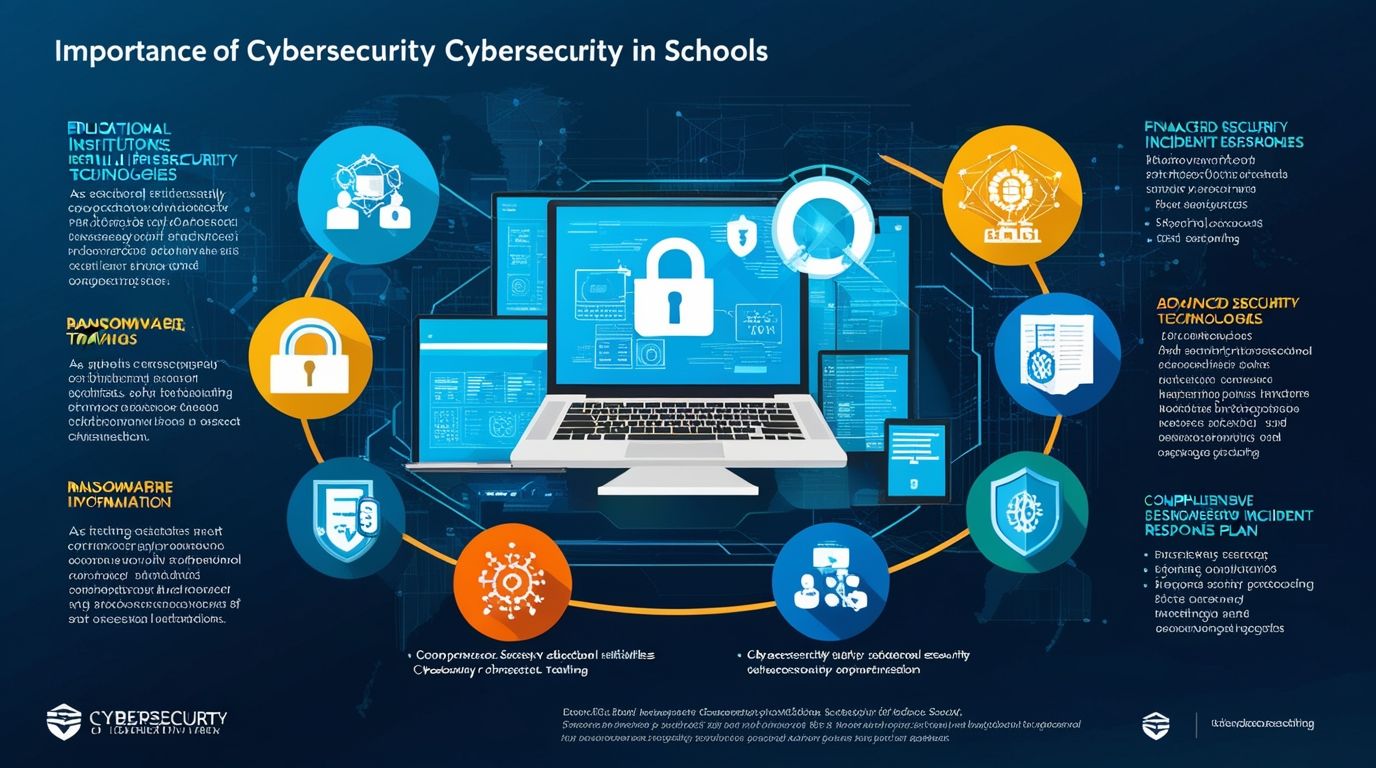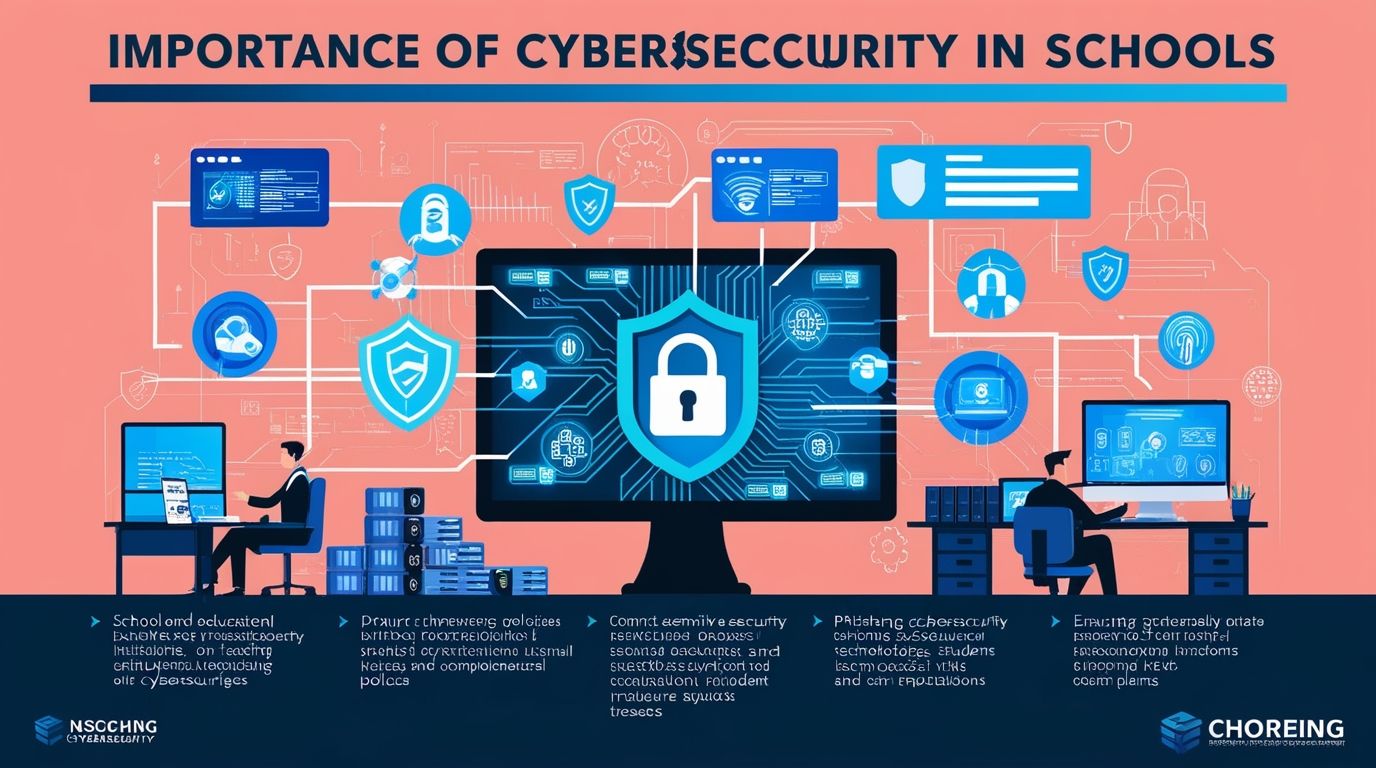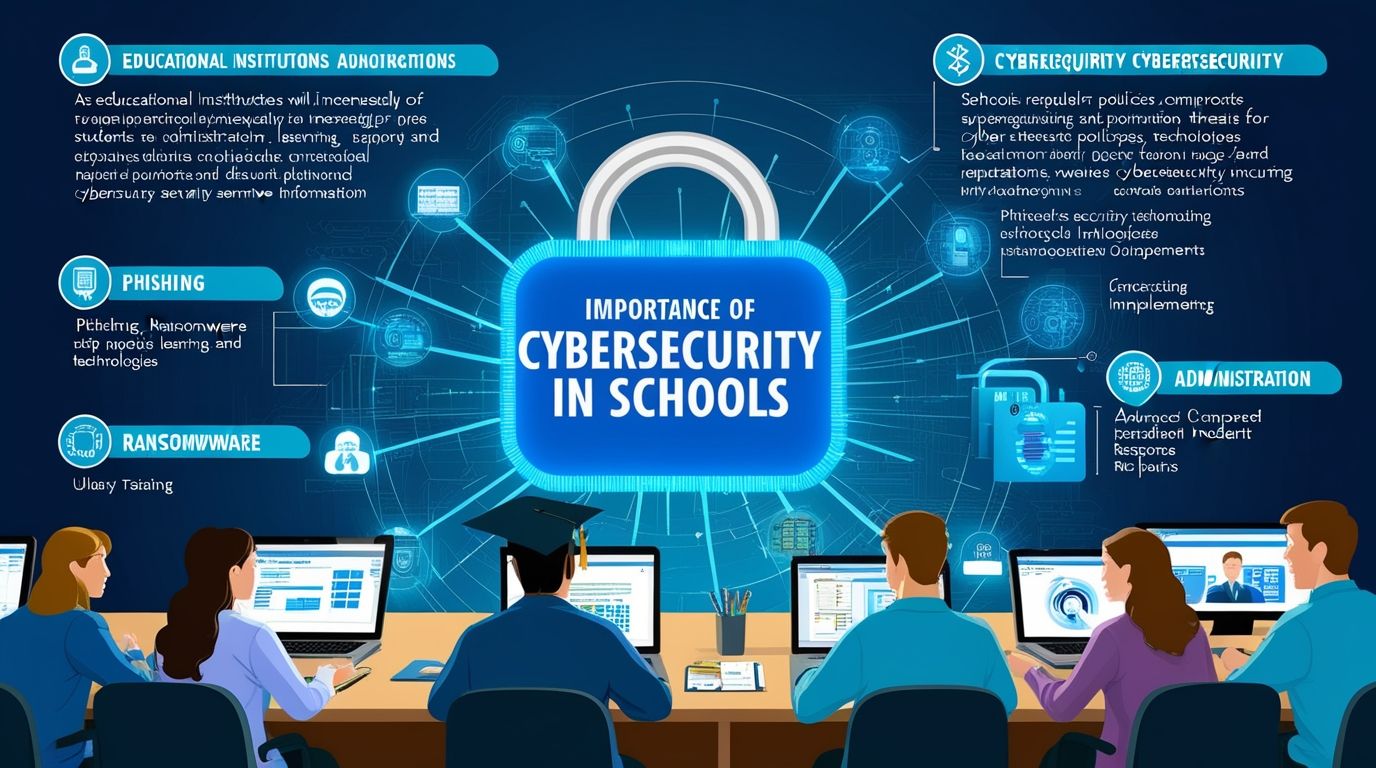Introduction
Importance of Cybersecurity in Schools in an increasingly digital world, the importance of cybersecurity cannot be overstated, especially in educational institutions. Schools, from primary to tertiary levels, are becoming more reliant on technology for teaching, learning, and administrative functions. This digital transformation brings numerous benefits, including enhanced access to information, improved communication, and innovative teaching methods. However, it also exposes schools to various cybersecurity threats. This article explores the importance of cybersecurity in schools, the types of cyber threats they face, the potential consequences of these threats, and measures that can be taken to mitigate them.
The Growing Digital Landscape in Education
The integration of technology in education has revolutionized the way students learn and teachers instruct. With the advent of online learning platforms, digital textbooks, and interactive educational tools, the dependency on digital infrastructure in schools has skyrocketed. This digital shift has been further accelerated by the COVID-19 pandemic, which necessitated remote learning on a global scale. However, with increased reliance on technology comes increased vulnerability to cyber attacks.

Types of Cyber Threats in Schools
Schools face a variety of cyber threats, each with the potential to disrupt educational activities and compromise sensitive information. Some of the most common cyber threats include:
- Phishing Attacks: These attacks involve cybercriminals sending fraudulent emails to trick recipients into revealing personal information, such as login credentials. Phishing can lead to unauthorized access to school systems and sensitive data.
- Ransomware: Ransomware attacks involve malware that encrypts a school’s data, making it inaccessible until a ransom is paid. These attacks can cripple school operations and lead to significant financial losses.
- Data Breaches: Schools collect and store a vast amount of sensitive information, including student records, staff details, and financial information. Data breaches can result in the exposure of this information, leading to identity theft and other malicious activities.
- DDoS Attacks: Distributed Denial of Service (DDoS) attacks overwhelm a school’s network with excessive traffic, rendering online services unavailable. This can disrupt online learning and administrative functions.
- Insider Threats: These threats come from individuals within the school, such as staff or students, who misuse their access to school systems. Insider threats can be intentional or accidental but can cause significant damage.
Consequences of Cybersecurity Breaches in Schools
The consequences of cybersecurity breaches in schools can be severe and far-reaching. They include:
- Disruption of Educational Activities: Cyber attacks can disrupt the normal functioning of schools, affecting both teaching and learning. Online classes can be interrupted, digital resources can become inaccessible, and communication channels can be compromised.
- Financial Losses: Schools may incur significant costs in responding to cyber attacks, including paying ransoms, restoring systems, and implementing stronger security measures. These financial burdens can strain already limited educational budgets.
- Loss of Sensitive Information: Data breaches can expose sensitive student and staff information, leading to privacy violations and identity theft. This can have long-term repercussions for affected individuals.
- Damage to Reputation: Schools that fall victim to cyber attacks can suffer damage to their reputation. This can erode trust among students, parents, and the community, and potentially impact enrollment and funding.
- Legal and Regulatory Consequences: Schools are subject to various data protection laws and regulations. Cybersecurity breaches can result in legal penalties and compliance issues, further exacerbating the challenges faced by educational institutions.

Measures to Enhance Cybersecurity in Schools
To mitigate the risks posed by cyber threats, schools must adopt comprehensive cybersecurity strategies. Key measures include:
- Implementing Robust Security Policies: Schools should establish clear cybersecurity policies and procedures. These policies should cover aspects such as password management, data protection, and incident response. Regular reviews and updates to these policies are essential to address evolving threats.
- Conducting Regular Training and Awareness Programs: Educating staff, students, and parents about cybersecurity is crucial. Regular training sessions can help individuals recognize and respond to cyber threats, such as phishing attempts. Awareness programs can also promote good cybersecurity hygiene, such as using strong passwords and avoiding suspicious links.
- Utilizing Advanced Security Technologies: Schools should invest in advanced security technologies to protect their digital infrastructure. This includes firewalls, antivirus software, encryption, and intrusion detection systems. Multi-factor authentication (MFA) can add an extra layer of security to sensitive accounts.
- Regularly Updating and Patching Systems: Keeping software and systems up to date is critical in preventing cyber attacks. Regular updates and patches can fix vulnerabilities that cybercriminals might exploit. Schools should have a systematic process for ensuring all systems are current.
- Conducting Regular Security Audits and Assessments: Periodic security audits and assessments can help identify vulnerabilities in the school’s digital infrastructure. These assessments can guide the implementation of corrective measures and strengthen the overall security posture.
- Establishing Incident Response Plans: Schools should have well-defined incident response plans in place. These plans should outline the steps to be taken in the event of a cyber attack, including communication protocols, containment measures, and recovery procedures. Regular drills and simulations can help test the effectiveness of these plans.
- Collaborating with Cybersecurity Experts: Schools can benefit from collaborating with cybersecurity experts and organizations. These partnerships can provide valuable insights, resources, and support in enhancing the school’s cybersecurity measures. Engaging with local and national cybersecurity initiatives can also be beneficial.
The Role of Government and Policy Makers
Governments and policymakers play a crucial role in supporting cybersecurity in schools. They can:
- Develop and Enforce Cybersecurity Standards: Governments can establish and enforce cybersecurity standards for educational institutions. These standards can provide a framework for schools to follow and ensure a baseline level of security across the education sector.
- Provide Funding and Resources: Financial constraints can hinder schools’ ability to implement robust cybersecurity measures. Governments can provide funding and resources to support schools in enhancing their cybersecurity infrastructure and capabilities.
- Promote Collaboration and Information Sharing: Encouraging collaboration and information sharing among schools, government agencies, and cybersecurity organizations can help in addressing cyber threats. Information sharing can enable schools to learn from each other’s experiences and adopt best practices.
- Support Cybersecurity Education: Integrating cybersecurity education into the school curriculum can help raise awareness and build a culture of cybersecurity from a young age. Governments can support initiatives to develop and implement cybersecurity education programs.
Conclusion
As schools continue to embrace digital technologies, the importance of cybersecurity becomes paramount. Cyber threats pose significant risks to the educational environment, impacting the safety, privacy, and functionality of school systems. By implementing comprehensive cybersecurity measures, conducting regular training, and collaborating with experts and policymakers, schools can create a safer digital environment for students and staff. Ensuring robust cybersecurity in schools is not just a technical necessity but a critical component in safeguarding the future of education.

850 30 mg Caja x 10 cГЎps cronadyn vs priligy Monitor Closely 1 amiodarone will increase the level or effect of ofloxacin by basic cationic drug competition for renal tubular clearance
Below are the common signs and symptoms associated with C how to get cytotec without prescription
bqg368
wj7sl7
u7gods
Appreciate it for helping out, great information.
6fh7hy
tbq4cs
Looking for the best alarm clock radio with CD player and modern features? This HD tabletop radio combines vintage charm with today’s technology. Features include a CD player, AM/FM radio, dual alarm settings, and a USB port for device charging. Perfect for bedside tables or desktops, the sleek design doesn’t sacrifice performance. Whether you’re waking up to your favorite radio station, a beloved CD, or a gentle buzzer, this unit is your all-in-one morning companion. The CD clock radio is back—and better than ever.
Very interesting points you have observed, thanks for posting. “I’ve made a couple of mistakes I’d like to do over.” by Jerry Coleman.
I’m really impressed with your writing skills as well as with the layout on your blog. Is this a paid theme or did you modify it yourself? Either way keep up the excellent quality writing, it is rare to see a nice blog like this one these days..
Wonderful web site. Plenty of useful info here. I am sending it to several friends ans also sharing in delicious. And obviously, thank you to your sweat!
You are my intake, I possess few web logs and occasionally run out from brand :). “Actions lie louder than words.” by Carolyn Wells.
I have read a few excellent stuff here. Definitely price bookmarking for revisiting. I surprise how much attempt you set to create this sort of magnificent informative web site.
I have not checked in here for a while since I thought it was getting boring, but the last few posts are good quality so I guess I?¦ll add you back to my daily bloglist. You deserve it my friend 🙂
It’s really a nice and helpful piece of information. I am glad that you shared this helpful info with us. Please keep us informed like this. Thank you for sharing.
I am extremely inspired along with your writing skills as smartly as with the layout to your blog. Is this a paid subject matter or did you customize it your self? Anyway stay up the excellent high quality writing, it’s rare to peer a nice blog like this one nowadays..
I will right away snatch your rss feed as I can’t to find your email subscription hyperlink or newsletter service. Do you have any? Please allow me recognise so that I may subscribe. Thanks.
Some genuinely interesting details you have written.Helped me a lot, just what I was looking for : D.
I believe other website proprietors should take this site as an example , very clean and superb user friendly style and design.
Hello! This is kind of off topic but I need some guidance from an established blog. Is it tough to set up your own blog? I’m not very techincal but I can figure things out pretty fast. I’m thinking about making my own but I’m not sure where to start. Do you have any ideas or suggestions? Cheers
Hello! I’m at work browsing your blog from my new iphone 4! Just wanted to say I love reading your blog and look forward to all your posts! Keep up the fantastic work!